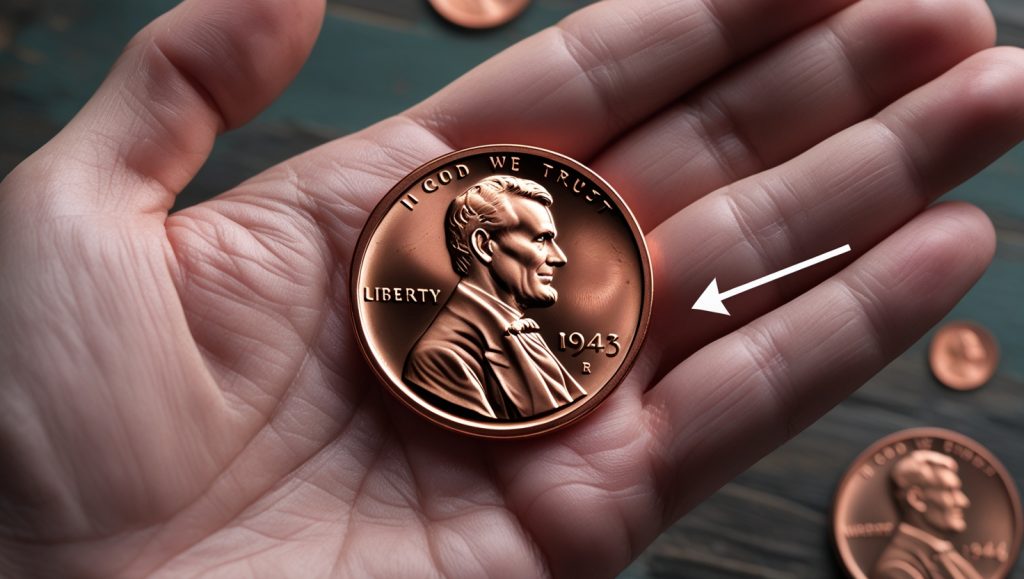The world of collectible coins is filled with surprises, and one error stands out above the rest: the 1943 Copper Penny.
This rare minting mistake, produced during World War II, has become one of the most coveted error coins in American numismatics.
With some specimens fetching up to $1 million, this coin is a true testament to the value that can be hidden in the smallest change.
A Glimpse Into History
In 1943, the United States was deep into World War II, and copper was a critical resource for the war effort.
As a result, the U.S. Mint made a significant change in production—most pennies that year were struck on zinc-coated steel rather than copper.
However, due to a production oversight, a limited number of pennies were accidentally struck in copper. These rare coins quickly caught the eye of collectors and investors, transforming what was once common currency into a rare coin of monumental value.
Understanding the Minting Error
The 1943 Copper Penny is not a result of a deliberate change in design but rather an inadvertent error. The process that led to the mistake involved the use of outdated copper planchets (blanks) during a transition period.
The result was a penny with the familiar Lincoln portrait and reverse design, but made entirely of copper. This error not only represents a fascinating piece of minting history but also illustrates the complexities and occasional mishaps inherent in coin production.
Key Features and Rarity
Several factors contribute to the incredible value of the 1943 Copper Penny:
- Material Composition: Unlike the standard 1943 steel pennies, these rare coins are made of copper, giving them a distinct color and weight.
- Limited Mintage: Only a very limited number of these coins exist. Estimates suggest that only a few dozen have survived in high grade, making them exceptionally scarce.
- Historical Significance: Produced during a time of national crisis, the error serves as a reminder of the wartime measures that affected everyday items, including currency.
- Collector Demand: With auction prices soaring and collectors worldwide on the hunt, the coin’s status as a minting error has turned it into a highly desirable investment.
Below is a table summarizing the essential details of the 1943 Copper Penny:
| Attribute | Detail |
|---|---|
| Coin Name | 1943 Copper Penny |
| Year | 1943 |
| Standard Composition | Copper (for error coins) vs. zinc-coated steel (standard issue) |
| Mintage | Extremely limited; only a few dozen known in high grade |
| Error Type | Production error due to outdated copper planchets |
| Estimated Value | Up to $1 Million in pristine condition |
The Impact on the Market
The discovery of a 1943 Copper Penny can transform an ordinary coin collection overnight. Auction houses have seen bidding wars over these pennies, and even coins in average condition can command impressive sums.
Collectors are not only drawn by the rarity but also by the intriguing story behind each coin—a reminder of how a small mistake can turn into a monumental treasure.
Collectability and Investment Potential
For both seasoned collectors and new enthusiasts, the 1943 Copper Penny represents an extraordinary investment opportunity. Here are a few tips for those interested in this rare coin:
- Research Thoroughly: Learn about the coin’s history, production process, and distinguishing features.
- Verify Authenticity: Always have the coin examined by a reputable grading service to confirm its authenticity and condition.
- Stay Informed: The market for error coins can be volatile. Keeping up with the latest auction results and collector trends is crucial for making an informed purchase.
The 1943 Copper Penny stands as a remarkable example of how a small minting error can create a $1 million treasure.
With its fascinating history, limited mintage, and enduring appeal, this coin continues to captivate collectors and investors alike.
Whether you are an experienced numismatist or a newcomer to the world of collectible coins, the story of the 1943 Copper Penny is a compelling reminder that sometimes, the most valuable treasures can be found in the change we overlook. Happy collecting!
FAQs
What makes the 1943 Copper Penny so special?
Its rarity stems from a production error during World War II when copper was in short supply. Only a few pennies were accidentally struck in copper, turning a common coin into a rare coin worth up to $1 million.
How can I tell if my 1943 penny is a copper error?
A genuine 1943 Copper Penny will feel heavier and have a distinct copper color compared to the typical zinc-coated steel pennies. For a definitive answer, consult a professional grading service.
Is investing in the 1943 Copper Penny a good idea?
Yes, due to its rarity and historical significance, the coin has strong investment potential. However, it is important to verify its authenticity and condition before making any purchase.

